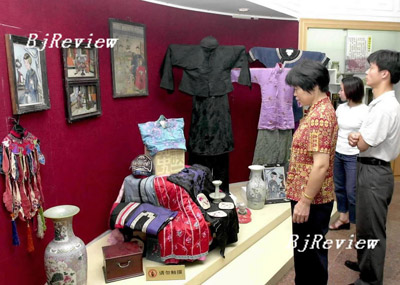
As one of the major highlights of Beijing, grand museums such as the Palace Museum (the Forbidden City), the National Museum of China, The Chinese History Museum, and the Chinese Military Museum attract numerous domestic and foreign visitors.
But few people know that there are a number of private museums in Beijing. They may be tiny or display limited collections, but they are unique and offer a wide variety. More importantly, visitors can enjoy interesting or exquisite ancient relics or cultural collections at a lower price or even for free in these private museums.
Colorful collections
The Jintai Art Museum, founded by Yuan Xikun, a famous Chinese painter and sculptor, houses portraits done in traditional Chinese wash painting and statues of more than 100 statesmen and other celebrities that Yuan created. Along with these are other Chinese wash paintings of animals such as tigers and lions. Besides his own works, Yuan has also collected some cultural relics that have been found overseas. The museum has a special hall for foreign visitors. But such a museum is known to few Beijing residents.
At the end of East Liulichang Street in Beijing, a flourishing cultural center during the Ming and Qing dynasties (1368-1911) and now famous for its antique shops, a two-story building from the Qing Dynasty (1644-1911), hidden among the other shops, houses the Songtangzhai Folk Carving Museum, owned by Li Songtang, considered the top collector of gate towers.
The 254-square-meter museum exhibits ancient folk brick, stone and wooden carvings. A unique feature of the museum is that some collections are designed to be parts of the building itself, such as some carvings on the windows and walls.
Compared with the small size of Songtangzhai, the China Red Sandalwood Museum, arguably China’s largest private museum, is rather grand. The exhibits on display there, mostly copies of Ming and Qing Dynasty furniture and architectural sights like the Forbidden City and the Temple of Heaven, are, unsurprisingly, made of red sandalwood.
Along with these three museums, many unique privately owned museums are scattered in every corner of Beijing, waiting to be discovered.
For the common good

Just as Yuan collects cultural relics that have been “lost” in foreign countries, most private museum owners in Beijing have a desire to preserve China’s excellent folk arts as much as they can. Most of them open museums for non-economic reasons.
“As he feels that if all of these folk art articles are abandoned, it will be a great pity, Li decided to collect and exhibit them, letting people know and remember these art works of our ancestors,” said a staff member of the Songtangzhai Museum.
Apart from her personal interest, Chen Lihua, owner of the China Red Sandalwood Museum, also hopes young Chinese people will remember the nation’s history of red sandalwood.
Most privately owned museums in Beijing have no economic support for their collections, and thus they face a severe challenge to survive.
According to the staff member of the Songtangzhai Museum, someone had offered 800,000 yuan a year to rent the building, and Li had also thought about operating a teahouse there at the same time, but finally he determined to open the building for exhibits only. Ticket prices for the museum initially were set at 30, 20 and 10 yuan, but later Li decided to allow visitors to determine what they want to pay after visiting. Li now uses other sources of income to help finance the museum.
The Jintai Museum charges no admission. “No matter whether they are large or small, privately owned museums are difficult to run. People who are willing to invest money in museums do it only because of their belief,” said Yuan.
Apart from the economic issues, the lack of attention from the public is another headache for these private museums. There are few media reports about these museums and their collections. Some people will not spend money seeing these types of exhibitions. But Yuan is still optimistic. “We need to believe in the development of society, and private museums will receive more attention from the public sooner or later,” he said.
| 